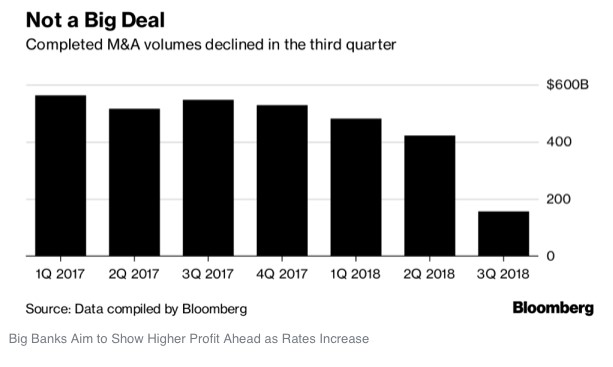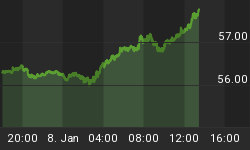Big banks are benefiting from higher interest rates and an economy that’s still chugging along (for now), but Wall Street banks are under a fair amount of pressure to over impress after underperforming the broader stock market.
Profitability may be at a decade high, but it also may have just peaked.
Citigroup (NYSE:C), JPMorgan Chase (NYSE:JMP) and Wells Fargo (NYSE:WFC) will report earnings on Friday morning before the opening bell.
Analysts are estimating earnings per share for Wells Fargo of around $1.18 (23.7-percent growth) on revenue of $21.8 billion (0.5-percent growth)
For JPMorgan, analysts are expecting earnings per share of $2.26 (26.7-percent growth) on revenue of $27.6 billion (5.5-percent growth).
Finally, for Friday’s barrage, analysts are looking at earnings per share of $1.65 for Citigroup (26.6-percent growth) on sales of $18.46 billion (1.6-percent growth).
Bank of America (BofA) (NYSE:BAC) will release earnings on October 15th, with Wall Street expecting a year-over-year increase in earnings on higher revenues for Q3.
But this is also a big week for serious news flow with a series of inflation-related reports beginning on Wednesday (Producer Price Index), and a line-up of Fed speakers on that same day. Thursday will see the release of the Consumer Price Index, which measures inflation on the retail level.
True, soaring Treasury yields after wage increases in September, a solid jobs report and the lowest level of unemployment in almost five decades is widening the margin for banks, which in turn is pushing the consensus that the Fed will go for more rate hikes to control inflation.
The bigger story here is that bank loan growth isn’t keeping pace with the economy itself. Just looking at the quarter’s numbers isn’t enough: “The quarter will be fine,” Susan Katzke, bank analyst at Credit Suisse Group AG, said in a note to clients carried by Bloomberg. “It’s more about the forward look.” Related: China Scrambles To Inject Liquidity Into Markets
Still, the profitability is impressive—and the best since the financial crisis thanks to a number of developments beyond Fed rate hikes, including lower tax rates, less ominous legal bills and record shareholder payouts, Bloomberg reports, citing a note to clients from Goldman Sachs. Or, in other words, better returns and easier regulations.
Bank of America is up 7.8 percent in the last three months; J.P. Morgan Chase is up 10.1 percent; and Citigroup is up 7.8 percent.
And overall, the Financial Select Sector ETF is up 5 percent over the period.
At the same time, while big banks are hoping to demonstrate that they’re seeing bigger profits because of rate increases, they can’t bank on everyone ignoring the various interpretations of the M&A picture.
This Bloomberg chart tells all:

(Click to enlarge)
Take Bank of America, for instance. The bank had a bad Q2 in terms of M&A, and Q3 is looking even worse. BAC has now fallen from fourth place to sixth in global M&A rankings, according to Dealogic. Bank of America recorded $723 million in global advisory revenue in the first three quarters of this year—half of what Morgan Stanley did.
According to Bloomberg, the 72-percent drop across the board in completed mergers and acquisitions in Q3 just means that deals are taking place, but not closing—yet. But while there have been fewer deals, the value of those deals increased 3.8 percent.
“Announced M&A is still robust and the markets are obviously doing well, so we doubt this marks the end of the cycle,” Oppenheimer & Co. analyst Chris Kotowski wrote in a note.
By Fred Dunkley for Safehaven.com
More Top Reads From Safehaven.com:

















